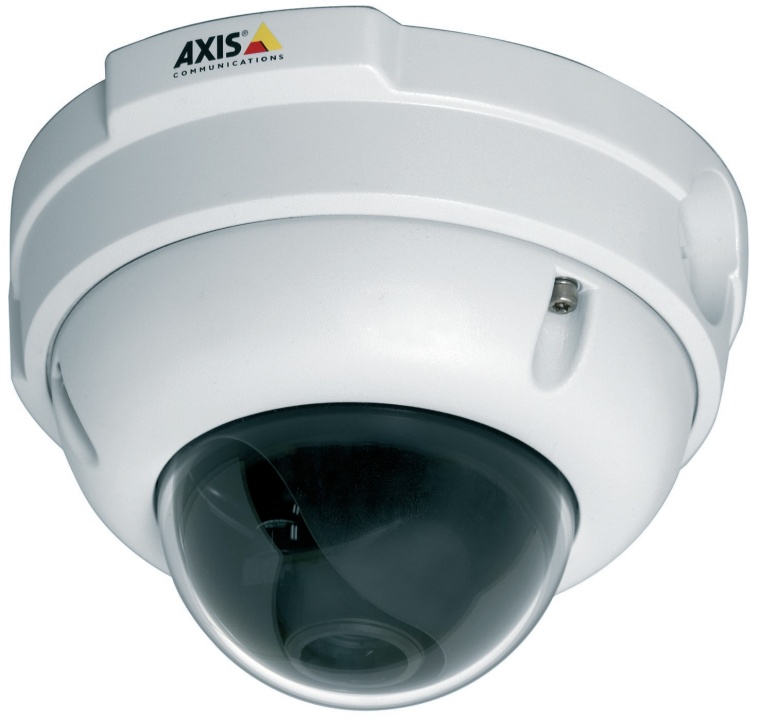Axis Communications: video surveillance of public transport in Stockholm
Axis Communications: video surveillance of public transport in Stockholm. The Stockholm transport authority has installed a security system for the underground, local trains and bu...

Axis Communications: video surveillance of public transport in Stockholm. The Stockholm transport authority has installed a security system for the underground, local trains and busses throughout the Swedish metropolis. Network cameras from Axis have been used here that contribute to the first application worldwide of network surveillance cameras conceived specifically for use in busses and trains – they deliver clear digital images in spite of the vibrations and high humidity in mass transport systems.
She really is an old Swedish lady of great tradition: the Stockholm transport authority, SL (Stockholms Lokaltrafik), has been running public transport in the Stockholm region since 1835, and is still working at full power: no less than 650,000 passengers are shifted daily by her underground railway, busses and local trains. That amounts to somewhat more than half the total public transport in Sweden. In summer 2005, an investment was made in a new security centre for SL to improve passenger safety.
Video Surveillance and Emergency Telephones
The concept for this security project was developed in spring of the same year - and the first version was commissioned by October 2006. It consists of a centralised system for the future administration of video sources as well as an integrated safety alarm. Existing installations in each of the stations and depots will be progressively integrated into the new system. The section that was put into operation in October, called ‚Block 1‘, included the stations at Slussen, Zinkensdamm, Mälarhöjden, Midsommarkransen and Aspudden.
The underground stations have now been fitted with cameras to provide an overview of the platforms, for identification purposes and to detect unauthorised crossing of the track. Now all the remaining Stockholm underground stations will be progressively equipped in the same way. All the installations should be finished by October 2007.
The video surveillance system can now detect people on the tracks, and it is able to automatically give an alarm. Emergency telephones with integrated cameras allow the passengers to talk directly to the SL security centre. The operator can play back a sequence of audio and video recordings immediately before the call came in. Another part of the concept covers the fire alarm system that is installed in all tunnels and stations. It includes detection of poisonous gases and is integrated into the video and alarm management system.
Network cameras for Real-time Surveillance
The company decided on Axis when selecting the camera supplier. Incidents on the tracks and platforms can be monitored in real time, and if the software recognises unusual movements, such as people on the tracks for example, an alarm will be triggered. A combination of two types of network camera was chosen: Axis 225FD and Axis 212PTZ.
The latter has the advantage of allowing certain parts of the image to be enlarged with just a click of the mouse. In addition, the camera has no moving parts and is therefore practically free of wear.
The manipulation-protected Axis 225 FD is predominantly used outside. It can be mounted very easily so that it is particularly suitable for use in locations where protection against manipulation and poor weather conditions are necessary.
Video Management and Digital Video Recorders
The video management system is provided by the Visual Defence company. Their Visual Defence Virtual Matrix System manages live data such as the recordings with a graphic interface and virtual keyboard. It is capable of controlling many thousands of fixed and PTZ cameras at a time. The digital video recorders are also provided by Visual Defence: their Digital Video Storage System Mobile (DVSSm) has been specially developed for mobile use and the connection of both analog and IP cameras.
It consists of very robust hardware for mobile use and therefore copes well with temperature changes, vibrations, humidity and dust. It is controlled by the video management system.
Wireless Video Communication
There will also be a similar system for the Stockholm bus network, which is intended to come into service during this year. A pilot project with five busses in the city centre was started in August 2006. Video cameras that are integrated into the video administration system were also installed in these busses. They can make recordings during the journey and communicate over wireless with the security centre.
The entire fleet - that is more than 2,000 busses - will be equipped with the Axis 209FD-R cameras. As these use power-over-Ethernet, the Ethernet cable can provide the power and transmit the video data.
Using progressive scanning, the camera delivers sharp images of moving objects. It attains a frame rate of up to 30 fps using the Motion JPEG or MPEG4 video compression standards.
Fitted with a manipulation-protected casing, the camera is suitable for use in temperatures of between 0° and 50 °C and in a humidity of between 20% and 100%.
Contact:
Axis Communications GmbH,
Hallbergmoos, Gemany
Tel.: +49 811 555 08 0
Fax: +49 811 555 08 69
Info-de@axis.com
www.axis.com











